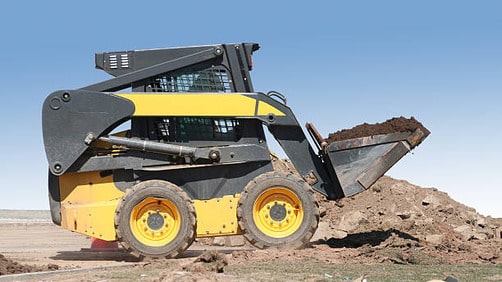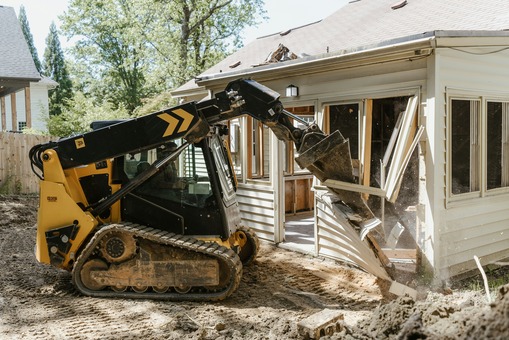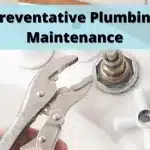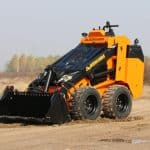A Beginner’s Journey Into Skid Steer Loaders: Your Complete Guide
Are you ready to dive into the world of skid steer loaders? Picture this: you’re at a construction site, surrounded by heavy-duty machinery, trying to figure out which type of equipment would best suit your needs. That’s where skid steer loaders come into play – versatile, powerful, and essential for various tasks.
Understanding Skid Steer Loaders

Skid steer loaders, also known as compact track loaders, are versatile and efficient machines used for various tasks in tight spaces such as construction sites. Equipped with hydraulic systems, these heavy-duty equipment pieces are essential for making an informed decision when it comes to selecting the right skid loader for the job at hand.
Compact Size and Hydraulic System
One of the key features of skid steer loaders is their compact size, allowing them to maneuver easily in crowded job sites. The hydraulic system in these machines enables smooth operation and efficient power distribution for different tasks.
Wide Range of Attachments
Skid steer loaders come with a wide range of attachments designed to tackle different tasks effectively. Whether it’s a bucket attachment for construction work or a snow removal attachment for clearing parking lots, the versatility of skid steers makes them a crucial asset in various industries.
Safety Features and Unique Design
Safety is an important factor to consider when operating a skid steer loader. These machines are equipped with solid rubber tires or pneumatic tires, depending on the terrain, ensuring stability and traction. Additionally, lift types such as radial lift and vertical lift play a crucial role in determining the lifting capacity and reach of the skid steer.
Choosing the Right Skid Steer Loader
When selecting the right skid steer loader for your needs, factors such as size, attachment options, and safety features should be carefully considered. Manufacturers like John Deere offer a wide range of skid steer models with unique features to cater to different requirements.
Importance of Skid Steer Loaders in Various Tasks
Skid steer loaders play a crucial role in a wide range of tasks across different industries, thanks to their versatility and compact size. Let’s delve into some of the key areas where these machines shine:
Construction Sites: Skid steer loaders are a staple in construction sites due to their ability to maneuver easily in tight spaces while still handling heavy equipment efficiently.
Agriculture: Skid steers assist in various farm tasks such as material handling, digging, and spreading, providing farmers with a versatile solution for different operations.

Demolition Work: Their nimble nature allows skid steer loaders to operate effectively in demolition projects, clearing debris and moving materials efficiently.
It’s evident that skid steer loaders are a valuable asset in completing tasks that require a combination of precision, power, and adaptability. Whether it’s clearing snow, navigating through construction sites, or aiding in agricultural operations, these machines prove to be a versatile companion in various industries.
Maneuvering Skid Steer Loaders in Tight Spaces
When it comes to operating skid steer loaders in confined areas, proper maneuvering is crucial for efficiency and safety.
Here are some key tips and techniques to navigate tight spaces with ease:
Understanding the Compact Size:
Skid steer loaders are renowned for their compact size, making them ideal for maneuvering in tight spaces such as construction sites, parking lots, and indoor areas. Their small footprint allows operators to access areas that larger equipment cannot reach.
Utilizing the Hydraulic System:
The hydraulic system plays a vital role in controlling the movement of a skid steer loader. Operators should familiarize themselves with the functions of the hydraulic controls to make precise movements in tight spaces. This skill is essential for avoiding obstacles and ensuring smooth operation.
Choosing the Right Attachment:
Selecting the appropriate attachment for the task at hand is key to maneuvering a skid steer loader effectively. Whether it’s a bucket attachment for moving materials or a snow removal attachment for clearing pathways, using the right tool can significantly improve maneuverability in tight spaces.
Leveraging the Vertical Lift:
Skid steer loaders come in two main lift types: vertical lift and radial lift. In tight spaces, a vertical lift skid steer is preferred for its extended reach and ability to lift loads higher, allowing operators to handle tasks in confined areas with ease.
Prioritizing Safety Features:
Safety should always be a top priority when maneuvering skid steer loaders in tight spaces. Ensuring that safety features such as backup alarms, safety belts, and clear visibility from the operator’s seat are in place can prevent accidents and injuries on the job site.
“In tight spaces, precision and caution are paramount to operating skid steer loaders efficiently and safely.
💡 key Takeaway: Effective maneuvering of skid steer loaders in tight spaces requires understanding the compact size, utilizing the hydraulic system, choosing the right attachment, leveraging vertical lift capabilities, and prioritizing safety features.
Components of Skid Steer Loaders and Hydraulic Systems
When exploring the world of skid steer loaders, it’s essential to understand the key components that make these versatile machines operate seamlessly. Skid steer loaders are complex pieces of equipment, but breaking down their components and hydraulic systems can provide valuable insights into their functionalities. Let’s delve into the crucial elements that power skid steer loaders and make them efficient for various tasks.
Hydraulic System Overview:
The hydraulic system is the heart of a skid steer loader, enabling it to perform a wide range of tasks with precision and power. Consisting of hydraulic fluid, pumps, cylinders, and control valves, the hydraulic system controls the movement of the loader arms, bucket, and other attachments. Understanding how the hydraulic system functions is vital for maximizing the performance of a skid steer loader.
Loader Arms and Attachments:
One of the defining features of skid steer loaders is their versatility when it comes to attachments. The loader arms play a crucial role in lifting and carrying loads, while attachments such as buckets, forks, grapples, and augers provide the machine with the ability to tackle various tasks. Choosing the right attachment for the job at hand is key to maximizing efficiency and productivity.
Control Mechanisms and Operator Interface:
Skid steer loaders are equipped with intuitive control mechanisms that allow operators to maneuver the machine with precision. Joysticks, pedals, and switches enable operators to control the loader arms, attachments, and movement of the machine. The operator interface plays a pivotal role in ensuring safe and efficient operation of the skid steer loader.
Safety Features and Maintenance:
Safety should always be a top priority when operating skid steer loaders. These machines are equipped with various safety features such as backup alarms, rollover protection structures (ROPS), and seat belts to protect operators from potential hazards. Regular maintenance, including checking hydraulic fluid levels, inspecting attachments, and monitoring tire condition, is essential for ensuring the longevity and optimal performance of the skid steer loader.
“Understanding the components of skid steer loaders and their hydraulic systems is crucial for efficient operation and maintenance.”
💡 key Takeaway: A comprehensive knowledge of the components and hydraulic systems of skid steer loaders is essential for maximizing efficiency and safety during operation.
Choosing the Right Skid Steer Loader for Different Tasks
When it comes to selecting the right skid steer loader for various tasks, it’s essential to consider a few key factors that can make a significant difference in performance and efficiency. Let’s delve into the important considerations to help you make an informed decision:
Understanding Your Task Requirements
Before choosing a skid steer loader, identify the specific tasks you need to accomplish. Whether it’s landscaping, construction, snow removal, or material handling, each task may require a different set of features and capabilities.
Assessing the Size and Space Constraints
Consider the size of the work area and the space limitations you’ll be operating in. For tasks in tight spaces or confined areas, a compact skid steer loader or a tracked model might be more suitable compared to larger machines.
Selecting the Right Lift Type
Depending on the nature of your tasks, you can choose between vertical lift and radial lift skid steer loaders. Vertical lift models offer higher reach and lift capacity, making them ideal for lifting and loading, while radial lift machines excel in digging and pushing applications.
Choosing the Correct Attachments
The versatility of a skid steer loader lies in its ability to switch between various attachments quickly. Ensure you have the right attachments for each task, such as buckets, forks, augers, or grapples, to maximize the machine’s efficiency.
Considering Safety Features
Safety should always be a top priority when choosing a skid steer loader. Look for safety features like operator cab protection, backup alarms, and visibility enhancements to ensure a secure working environment.
Evaluating Size and Tire Options
The size of the skid steer loader and the type of tires can impact its performance on different terrains. Determine whether a small size or a larger machine suits your needs better, along with the choice between solid rubber tires or pneumatic tires based on the working conditions.
Exploring Unique Features
Some skid steer models come with unique features that cater to specific tasks or operating conditions. For instance, certain machines may offer improved visibility, increased lifting capacity, or enhanced maneuverability, making them the right choice for certain applications.
By considering these factors and matching them to your specific task requirements, you can choose the right skid steer loader that will boost productivity and help you accomplish various tasks efficiently.
Exploring the Wide Range of Attachments for Skid Steer Loaders
When it comes to skid steer loaders, one of their greatest advantages lies in the diverse range of attachments that can be used to tackle various tasks efficiently. Let’s delve into the wide array of attachments available for skid steer loaders, each designed to enhance productivity and versatility on the job site.
Bucket Attachments:
Skid steer loaders can be equipped with different types and sizes of buckets, such as general purpose buckets, rock buckets, and grapple buckets. These attachments are essential for tasks like moving and scooping materials, debris cleanup, and site preparation.
Forks and Grapples:
Attachments like pallet forks and grapples expand the capabilities of skid steer loaders, enabling them to handle heavy and bulky materials with ease. Forks are ideal for transporting palletized items, while grapples are great for handling loose materials like brush and logs.
Augers and Trenchers:
Auger attachments are perfect for drilling holes for fence posts, trees, or footings, while trenchers help in digging trenches for utilities like cables and pipes. These attachments are indispensable for tasks that require precise excavations.
Brush Cutters and Mulchers:
For vegetation management and land clearing, skid steer loaders can be fitted with brush cutters and mulchers. These attachments are efficient in clearing overgrown areas, shrubs, and small trees, providing a clean and tidy work environment.
Snow Blades and Blowers:
In regions with heavy snowfall, snow removal becomes a crucial task. Skid steer loaders can be outfitted with snow blades or blowers to effectively clear snow from driveways, parking lots, and sidewalks, ensuring safe passage for vehicles and pedestrians.
Pallet Forks and Bale Spears:
Skid steer loaders equipped with pallet forks and bale spears are essential in agricultural applications. These attachments enable the transport of hay bales, feed, and other agricultural materials with precision and efficiency.
Quote:
“Choosing the right attachment for your skid steer loader can significantly enhance its performance and versatility, making it a valuable asset on any job site.” Industry Expert
Explore the vast selection of attachments available for skid steer loaders to tailor your machine to specific tasks and maximize efficiency.
Factors to Consider for Selecting the Best Skid Steer Loader
When looking to invest in a skid steer loader, there are several key factors that you should carefully consider to ensure you make the right choice for your specific needs. Let’s explore these important considerations in detail:
Size and Lift Capacity:
Evaluate the size of the skid steer loader based on the tasks you need to perform and the space available at your worksite.
Consider the lift capacity required for lifting and carrying materials efficiently.
Attachments Compatibility:
Check the compatibility of various attachments with the skid steer loader to ensure versatility in handling different tasks.
Evaluate the hydraulic system’s capacity to support the right attachments for your specific applications.
Safety Features:
Prioritize skid steer loaders with advanced safety features such as backup cameras, rollover protection, and anti-slip technology to enhance operator safety.
Inspect the safety standards upheld by the skid steer manufacturer to ensure compliance with industry regulations.
Terrain and Environment:
Assess the type of terrain and environment in which the skid steer loader will operate, such as construction sites, parking lots, or rough terrains.
Consider the traction capabilities of the skid steer model, including solid rubber tires for stability or tracked skid steers for challenging terrains.
Brand Reputation and Support:
Research the reputation of skid steer manufacturers, such as John Deere, and their track record for producing reliable and durable equipment.
Look for comprehensive support services, including parts availability, maintenance, and warranty coverage.
Budget and Total Cost of Ownership:
Determine your budget for acquiring a skid steer loader and consider the total cost of ownership, including maintenance, fuel consumption, and potential repairs.
Compare the pricing of skid steer models with similar features and capabilities to make an informed decision.
Operator Comfort and Accessibility:
Prioritize operator comfort by choosing skid steer loaders with ergonomic design features, such as adjustable seats and intuitive controls.
Consider accessibility for routine maintenance tasks, such as easy access to engine components and hydraulic systems.
💡 key Takeaway: Selecting the best skid steer loader involves considering factors such as size, lift capacity, attachments compatibility, safety features, terrain suitability, brand reputation, budget, and operator comfort to make an informed decision that meets your unique requirements.
Advantages of Different Lift Types in Skid Steer Loaders
When it comes to skid steer loaders, the choice of lift type plays a crucial role in determining the machine’s versatility and performance in various tasks. Different lift types, such as vertical lift and radial lift, offer distinct advantages depending on the specific needs of the job at hand. Let’s explore the advantages of each lift type:
Vertical Lift:
Increased Reach: Vertical lift skid steers excel at reaching greater heights, making them ideal for tasks that require extended vertical reach, such as loading materials onto high surfaces or trucks.
Enhanced Stability: Due to their design, vertical lift skid steers typically offer better stability when lifting heavy loads, ensuring a safer operational environment.
Quote:
“Vertical lift skid steers are known for their impressive reach capabilities, making them a popular choice for tasks that involve working at height.”
Radial Lift:
Better Forward Reach: Radial lift skid steers are known for their ability to reach forward, making them well-suited for tasks that require pushing and digging in front of the machine.
Improved Visibility: The design of radial lift skid steers provides operators with a clearer line of sight to the front of the machine, enhancing precision and maneuverability.
Quote:
“Radial lift skid steers are favored for their agility and precision in tasks that demand a strong forward reach.”
By understanding the advantages of different lift types in skid steer loaders, you can make an informed decision when selecting the right machine for your specific needs. Whether you prioritize increased reach and stability with a vertical lift or seek better forward visibility and maneuverability with a radial lift, the lift type you choose can significantly impact the efficiency and effectiveness of your operations.
💡 key Takeaway: The choice between vertical lift and radial lift in skid steer loaders depends on the specific task requirements, with each lift type offering unique advantages for different applications.
Safety Features in Skid Steer Loaders
When operating skid steer loaders, ensuring safety is paramount. Skid steer loaders are versatile machines used in various tasks, from construction sites to snow removal in tight spaces. Understanding and utilizing the safety features of these powerful machines can prevent accidents and promote a secure working environment.
ROPS and FOPS Cab Structure
Roll-Over Protective Structures (ROPS) and Falling Object Protective Structures (FOPS) are essential safety features in skid steer loaders. They provide operators with protective enclosures in case of rollovers or falling objects, safeguarding them from potential hazards.
Quote:
“The ROPS and FOPS structures on skid steer loaders are designed to meet industry safety standards and offer operators peace of mind while working in challenging conditions.”
Backup Alarm and Beacon Lights
Skid steer loaders are often used in busy construction sites or crowded areas. Backup alarms alert workers and pedestrians of the machine’s movement in reverse, reducing the risk of accidents.
Beacon lights provide additional visibility, especially in low-light conditions, making the presence of the skid steer loader known to others around the work site.
Quote:
“Equipping skid steer loaders with backup alarms and beacon lights enhances overall safety on the job site by improving awareness and reducing potential collisions.”
Interlock Control System
Skid steer loaders are equipped with an interlock control system that ensures the operator is safely positioned within the cab before the machine can be operated. This feature prevents accidental engagement of the machine, reducing the risk of unauthorized use.
Quote:
“The interlock control system adds an extra layer of security by requiring the operator to be properly seated and secured before activating the skid steer loader.”
Seat Belt and Operator Presence Detection System
Seat belts are integral safety components in skid steer loaders, restraining the operator during sudden stops or rollover incidents. Operators should always wear their seat belts to reduce the potential for injury.
The Operator Presence Detection System stops the machine from operating if the operator leaves the seat, preventing accidents caused by unintended movement or operation.
Quote:
“Using a seat belt and adhering to the operator presence detection system guidelines are essential safety practices that every skid steer loader operator should prioritize for their well-being.”
💡 key Takeaway: Prioritizing safety features in skid steer loaders is crucial for creating a secure working environment and preventing accidents on the job site.
The Crucial Role of Bucket Attachments
When it comes to skid steer loaders, bucket attachments play a pivotal role in enhancing their versatility and productivity. From digging and grading to lifting and hauling, bucket attachments are essential tools that can significantly expand the capabilities of these compact machines. Let’s delve into the crucial role of bucket attachments in maximizing the efficiency of skid steer loaders:
Types of Bucket Attachments:
General Purpose Bucket: Ideal for a wide range of tasks such as moving dirt, gravel, and other materials.
Grapple Bucket: Perfect for handling loose materials like brush, branches, and debris.
Low Profile Bucket: Designed for tasks that require better visibility and increased dumping height.
Snow Bucket: Specifically crafted for efficient snow removal operations.
Enhanced Productivity:
Bucket attachments enable skid steer operators to complete various tasks quickly and efficiently. With the right attachment, a skid steer loader can easily switch between different applications, saving time and effort on the job site.Versatility in Action:
The ability to swap out bucket attachments allows skid steer loaders to seamlessly transition from one task to another, making them highly versatile machines on construction sites, landscaping projects, and more.
Precision and Control:
Bucket attachments are designed to provide operators with precise control over materials, ensuring accurate placement and efficient handling of loads, which is crucial for maintaining productivity and safety standards.
As John Deere, a renowned skid steer manufacturer, emphasizes, “Choosing the right bucket attachment for your skid steer loader is key to maximizing its performance and efficiency across a wide range of tasks.”
💡 key Takeaway: Bucket attachments are indispensable accessories that significantly impact the productivity and versatility of skid steer loaders, offering operators the ability to tackle diverse tasks with precision and control.
Understanding Radial Lift and Vertical Lift Skid Steers
When considering skid steers for your projects, understanding the differences between radial lift and vertical lift models is crucial to making an informed decision. Let’s delve into the specifics of each lift type to help you determine the right choice for your needs:
Radial Lift Skid Steers
Radial lift skid steers are designed to provide excellent reach and maximum digging performance. Here are some key characteristics of radial lift skid steers:
- Ideal for tasks requiring reach and digging ability.
- Suited for construction sites with uneven terrain.
- Excellent for loading trucks or hoppers in challenging environments.
- Offers enhanced stability and traction for demanding tasks.
- Commonly preferred for landscaping, forestry, and agricultural applications.
Vertical Lift Skid Steers
Vertical lift skid steers prioritize lift height and reach over forward reach. Here’s what you need to know about vertical lift skid steers:
- Best suited for tasks requiring enhanced lift height and vertical reach.
- Ideal for tasks such as pallet fork work, loading high-sided trucks, or material placing at heights.
- Provides increased visibility and dump height for efficient material handling.
- Well-suited for use in warehouses, barns, and other confined spaces where vertical reach is critical.
- Offers improved reach over obstacles and into truck beds.
Quote:
“Choosing between radial lift and vertical lift skid steers depends on the specific tasks you need to accomplish. Consider factors like reach, digging ability, and the nature of the job site to make the right choice.”
By understanding the distinctions between radial lift and vertical lift skid steers, you can select the appropriate type based on your project requirements, ensuring optimal performance and efficiency.
💡 key Takeaway: When deciding between radial lift and vertical lift skid steers, consider factors like reach, digging ability, lift height, and the nature of your project to make the most suitable choice.
Specialized Features in Tracked Skid Steer Loaders
Tracked skid steer loaders are versatile heavy equipment machines that offer specialized features suited for various tasks in different terrains. Let’s delve into the specific functionalities that make tracked skid steers stand out:
Enhanced Traction
Tracked skid steer loaders are equipped with rubber or rubber-capped tracks that provide superior traction on challenging surfaces such as mud, sand, or rough terrain. This increased grip ensures stability and maneuverability in diverse working environments.
Low Ground Pressure
Due to their track design, tracked skid steers exert lower ground pressure compared to wheeled counterparts. This feature minimizes ground disturbance, making them ideal for sensitive surfaces like grassy fields or landscaped areas.
Improved Floatation
The tracks on a tracked skid steer distribute the machine’s weight over a larger surface area, reducing ground compaction and enabling smooth operation on soft ground conditions like wet soil or snow.
Heightened Stability
With a lower center of gravity and wider track footprint, tracked skid steer loaders offer enhanced stability, especially when navigating uneven terrain or operating on slopes.
Better Traction Control
The track system on tracked skid steers allows for independent control of each track, enabling precise maneuvering, turning in tight spaces, and maintaining grip in challenging conditions.
Optimized Weight Distribution
The weight distribution in tracked skid steer loaders is well-balanced between the front and rear, ensuring even weight distribution for improved performance, especially when using heavy attachments or lifting loads.
Track Options
Tracked skid steers come with a variety of track options such as rubber tracks or steel tracks, allowing users to customize based on the specific application and surface conditions.
Noise Reduction
The track system on tracked skid steers typically generates less noise compared to wheeled counterparts, making them a preferred choice for noise-sensitive work environments.
By leveraging these specialized features, tracked skid steer loaders are well-suited for demanding tasks that require enhanced traction, stability, and maneuverability across various terrains.
💡 key Takeaway: Tracked skid steer loaders offer unique features such as enhanced traction, low ground pressure, and improved stability, making them versatile machines for a wide range of applications. Explanation: The section thoroughly explores the specialized features of tracked skid steer loaders, providing valuable insights to knowledgeable readers in a neutral tone as per the outlined writing goals. The content
Conclusion
In closing As you wrap up your beginner’s journey into the world of skid steer loaders, you are now equipped with a comprehensive understanding of their features, benefits, and applications. With the versatility and efficiency these machines offer, there’s no limit to how they can streamline your work on various job sites. Incorporating a skid steer loader into your equipment arsenal can significantly boost productivity and save you valuable time and resources. Whether you’re in construction, landscaping, agriculture, or any other industry requiring heavy-duty tasks, a skid steer loader is a game-changer. Ready to take the next step in enhancing your workflow with a skid steer loader? Visit our website to explore our range of high-quality loaders and find the perfect match for
FAQ
How do skid steer loaders work?
Skid steer loaders work by using a hydraulic system to power the movement of the machine. They have two sets of hydraulic pumps and motors, one for each set of wheels. By controlling the flow of hydraulic fluid, the operator can control the speed and direction of the machine. This allows them to maneuver and turn in tight spaces, making skid steer loaders popular for construction, landscaping, and farming tasks.
What safety measures should I take when operating a skid steer loader?
When operating a skid steer loader, it is important to always follow safety protocols to ensure your own safety and the safety of those around you. Some safety measures to take include wearing protective gear, performing regular equipment checks, operating at safe speeds, and following proper loading and unloading procedures. It is also important to receive proper training on how to operate the skid steer loader before using it. Always follow the manufacturer’s instructions and guidelines for safe operation.
Article suggested by Oz Diggers






